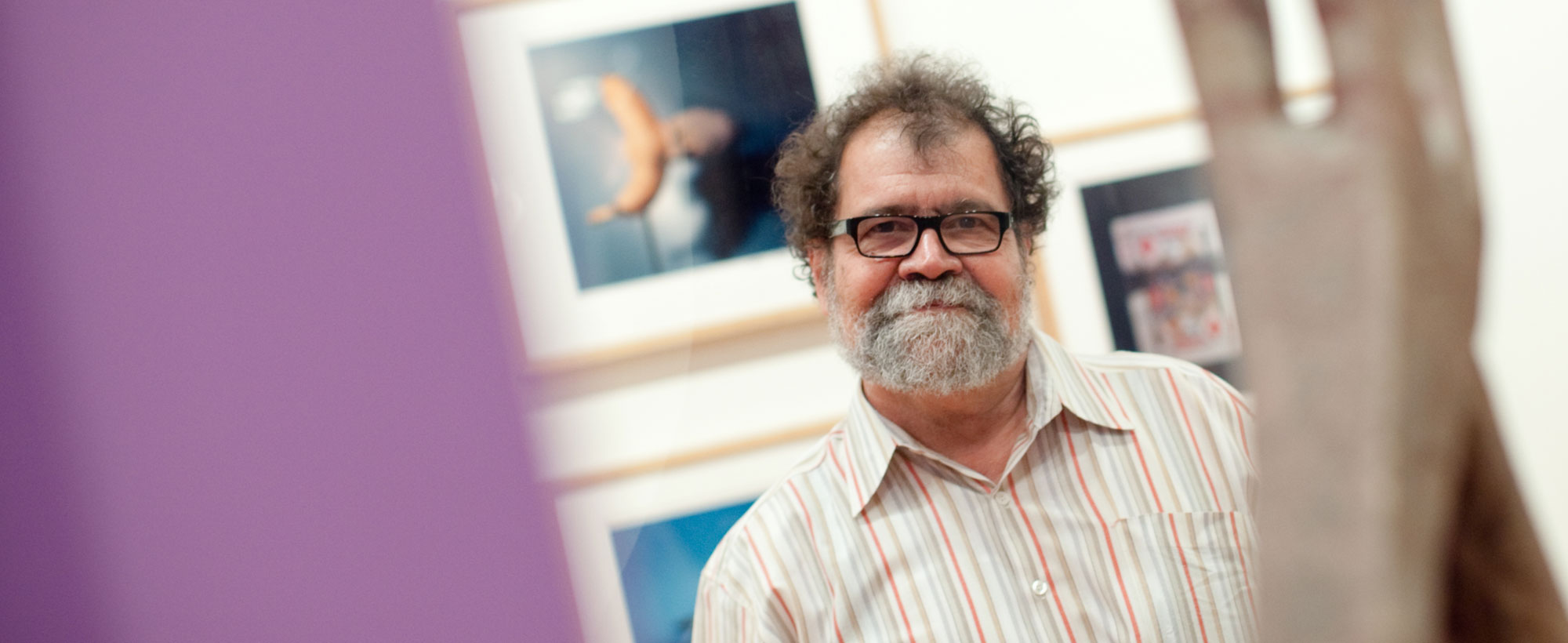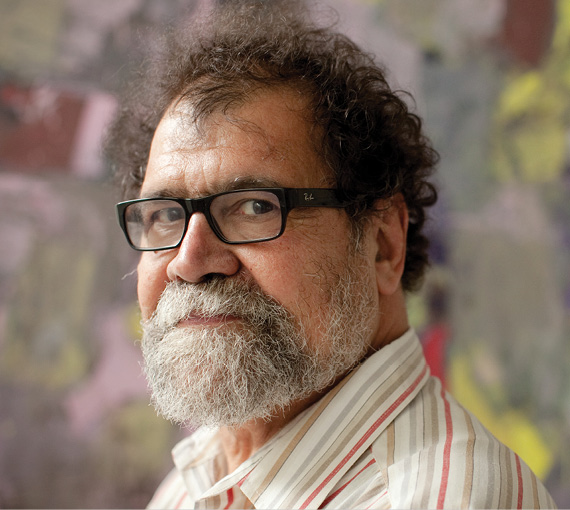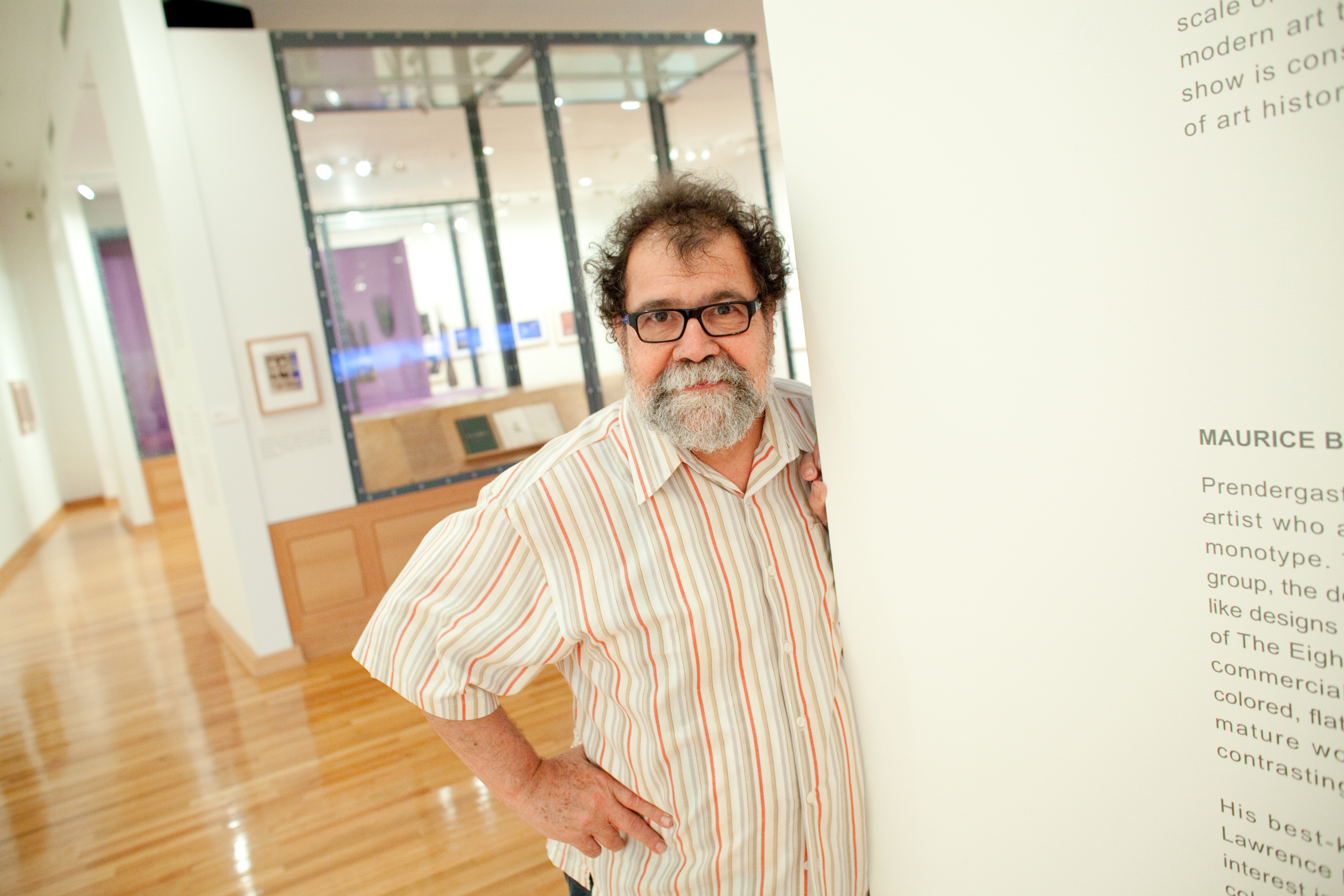A Vietnam veteran, he received scholarships to study visual art. He held a diploma from the School of the Museum of Fine Arts, Boston; a BFA from Tufts University, and received his MFA from the Rhode Island School of Design. A multimedia artist, he worked in a broad range of media that included drawing, painting and printmaking; photography; and socially engaged art and performance as co-founder of the EatArt installation collaborative with Giradot, a religion professor at Lehigh.
Viera exhibited in numerous galleries and museums internationally. His work is represented in private and public collections, including Cintas Foundation, New York; the Cleveland Museum, Cleveland, Ohio and the Tel Aviv Museum, Tel Aviv, in Israel. His work is currently on view in I Paint My Reality: Surrealism in Latin America at the Fort Lauderdale NSU Museum of Art.
Throughout his career, Viera curated more than 100 thematic and individual exhibitions showing an extraordinary range of works by distinguished local, national, and international artists and photographers such as Theo Anderson, María Martínez-Cañas, Walker Evans, Curlee Holton, Ellsworth Kelly, Ana Mendieta, Joan Mitchell, María Magdalena Campos-Pons and Walker Evans as well as a series of pioneering exhibitions featuring famous outsiders like Howard Finster, Lonnie Holley, Norbert Kox, Charlie Lucas, Mr. Imagination and Purvis Young.
As a museum director, he never shied from showing challenging and sometimes controversial artists such as Robert Mapplethorpe and Andres Serrano. A prominent example was the highly controversial exhibition of Larry Fink’s Forbidden Pictures (satirical photographs comparing leaders in the George W. Bush administration to clowns, prostitutes and other sordid figures in pre-Nazi Germany). Viera received so much hate mail and phone calls the gallery had to set up a separate line for Fink reactions.
The last exhibition he curated at Lehigh in 2017 brought a private Cuban collection of works on paper by Wifredo Lam for the first time to the United States. Critically acclaimed as one of the top exhibitions to view that year, the project took 20 years to realize, but Viera never had abandoned hope.
“Ricardo dedicated his career—half a century—to the Lehigh University Art Galleries. I am grateful, and honored, to have the opportunity to lead LUAG and to build on the legacy that Ricardo Viera has left behind,” said William Crow, director of LUAG.
Lucy Gans, professor and Louis and Jane P. Weinstock Chair in Art for the Department of Art, Architecture and Design, said, “Ricardo was the kind of colleague you could turn to for candid assessment. We didn’t always agree, but I always felt he treated me with the utmost respect. And he was the kind of friend you can share anything with: no judgments, just support, a big hug and a kind word.”
Gans said Viera was “impeccable” as a curator. In her last exhibition at Lehigh, she worked closely with Viera, whom she said made her concept work. “I wanted to do an installation on domestic violence and had about 50 different ideas of how that was going to come about. We sat down, worked it all out, had lots of discussions…. The exhibition was so successful, and I owe that entirely to Ricardo’s firm but gentle guiding hand.”
Stacie Brennan ’03, LUAG’s inaugural curator of education, said Viera was a mentor and advisor. She began her studies at Lehigh in marketing, she said, but wasn’t sure she was fulfilling her desire to be creative and make art. All that changed when she met Viera one day through the Art, Architecture, and Design department and talked to him at length about her studies.
“Ricardo had an incredible way of making everyone he talked to feel special and loved,” Brennan said. “He told me all about the world of museums and community art and the potential for incorporating my business skills into the arts and culture realm.”
After talking with him, Brennan decided to pursue a dual degree in business and art, under Viera’s guidance. “I took every class he offered and had the opportunity to intern and TA in the galleries,” she said. “Ricardo encouraged me to experiment with designing and offering family workshops and school programs for the community. He helped me to find my purpose and my passion for designing creative experiences for individuals of all ages through the visual arts.”
Brennan said she’s grateful to be able to help carry on and promote Viera’s legacy at Lehigh. “It gives me solace knowing that even though he is no longer physically with us, the positive impact he had on the arts and culture scene in the Lehigh Valley, and really all over the world, will continue to live on through the many people he influenced.”
Other domestic and international milestone shows that Viera had curated included: Outside Cuba/Fuera Cuba, organized by Rutgers University, 1986; Cuba/USA: The First Generation, 1991-93, Fondo del Sol, Washington, DC; American Voices: Latino Photography in the U.S., Fotofest, Houston/Smithsonian Institution; El Museo del Barrio, NYC, Universidad de Puerto Rico and Lehigh University, 1994.
An expert in outsider art, Viera championed the works of artists going back to Howard Finster and many others and was a major supporter of National Art Exhibitions of the Mentally Ill (NAEMI). Viera was a consulting curator for the Smithsonian Center for Latino Initiatives, including the traveling exhibition, Our Journey, Our Story. He was involved with a number of professional organizations and had been a reviewer for Fotofest Houston Biennial since 1992. He wrote photography reviews for specialized publications worldwide and received many accolades and awards for his contribution to the field of photography.
He was also a noted lecturer, panelist and consultant for government arts and cultural agencies, non-profit community organizations and private enterprise/visual art projects. He served for more than 20 years on the Visual Arts Board at ArtsQuest, as well as other non-profit arts organizations.
He is survived by his wife, the concert pianist and Latin American music scholar Martha Marchena; his daughters Solange Sales and Milena Sales; son-in-law Raul Martinez; two granddaughters, Sophie Lou Martinez and Ulla Veronique Martinez. He also leaves his sister Maria Pino and brother-in-law Mario Pino, brother Carlos Viera and nine nieces and nephews.
Lehigh will organize a memorial service to mourn his death and celebrate his life. Because of the coronavirus pandemic, it will be held later this year in the Lehigh Valley.
______________________________________
To make a gift in memory of Ricardo Viera, please do so at www.luag.org/support or contact luag@lehigh.edu. Gifts will be used in support of photographers and Latin American artists.







